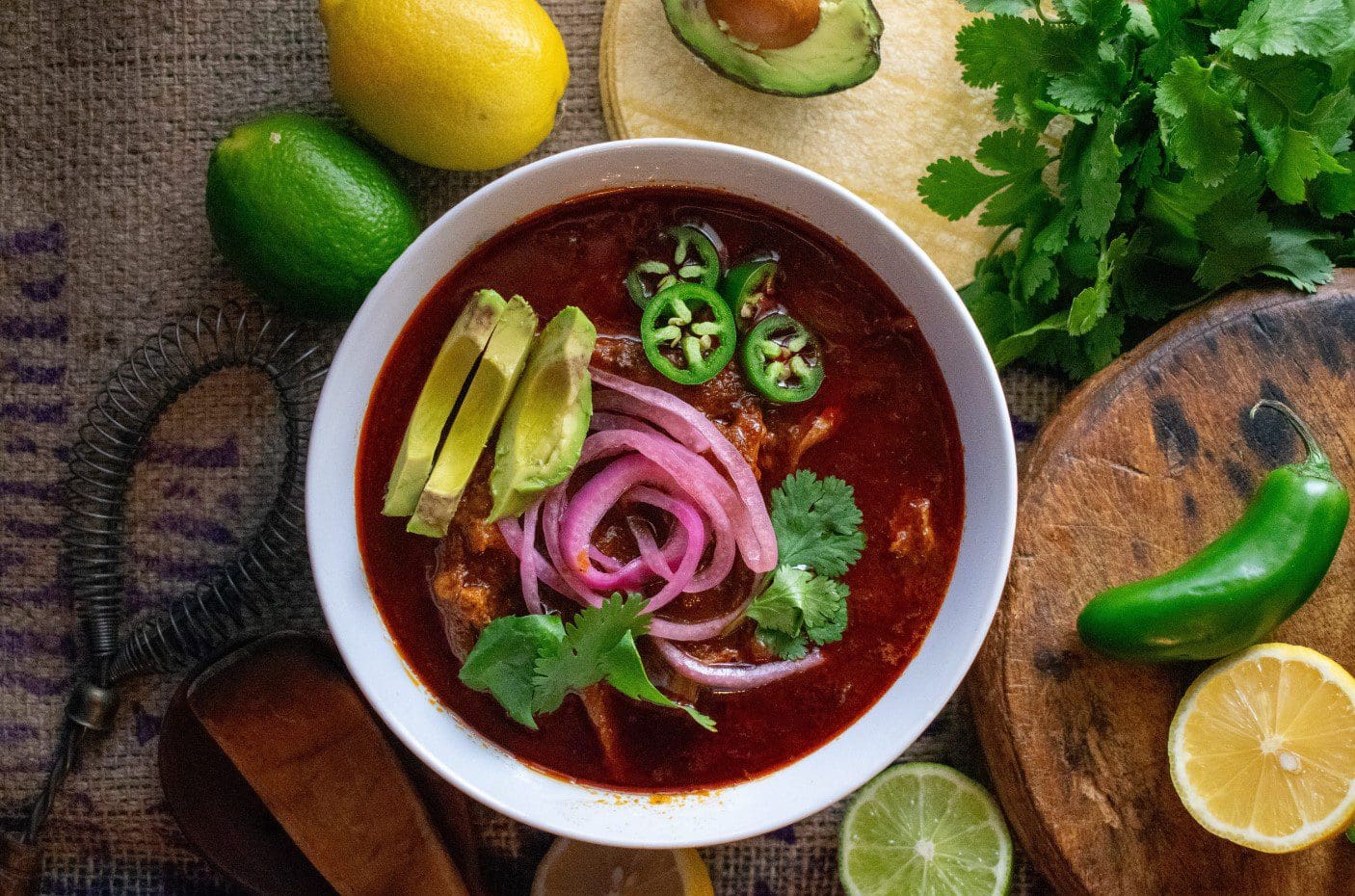
The Unique Ingredients Used in Oaxacan Traditional Dishes
On my culinary journey through the vibrant city of Puerto Escondido, I tasted my way through many exceptional local edibles, but it was Oaxacan traditional dishes that stole my heart. The radiant colors, aromatic smells, and deep rooted traditions manifested in mouthwatering bites sparked my admiration for the beauty of Oaxaca and its rich culinary culture.
For those unfamiliar, Oaxacan cuisine in Puerto Escondido is the distinct and diverse culinary art of the Oaxaca region in Mexico, renowned globally for its indigenous cultures and Spanish colonial influences. Largely unknown to many, Oaxaca’s cuisine is a treasure trove, a sensory journey of authentic Mexican gastronomy that pulls you in with its versatility and depth of flavors.
The heart and soul of Oaxacan traditional dishes are their unique ingredients. Each dish’s character is meticulously crafted from fresh, local produce, such as chili peppers, chocolate, and corn, handled with age-old culinary techniques passed down through generations. Every bite tells a story and connects us to Oaxaca’s fascinating past, its vibrant present, and its promising future. The importance of these authentic ingredients is evident, playing a crucial role in the creation of Oaxacan local specialties that make this cuisine one of the most coveted around the globe.
Exploration of Main Ingredients
Diving deeper into Oaxacan regional cuisine and specially local cuisine in Puerto Escondido involves uncovering the core ingredients that give traditional Mexican meals their unique nuances, tempting tastes, and captivating aromas. The storyline of Oaxacan food culture wouldn’t be complete without acknowledging two protagonists: chili peppers and corn.
Description and Significance of Chili Peppers in Oaxacan Cuisine
Chili peppers are not only an important component in Puerto Escondidos cuisine, but they are essentially the heart and soul of authentic Oaxacan dishes. Just as an artist uses different colors to create a masterpiece, Oaxacan chefs use various types of chili peppers to prepare Oaxacan indigenous meals, each adding its own intricate layer of flavor.
Over time, chili peppers have embedded themselves into Oaxaca’s culinary identity. The dishes’ piquancy, coming from these peppers, brings out both the vibrancy and the rich subtleties of flavors, the native Oaxacan cooking style is popular for. From the smoky and mild ‘Pasilla Mixe’ to the spicy kick of the ‘Chile de Árbol’, each chili pepper contributes in its unique way to the beautiful dance of flavors that is characteristic of old Oaxacan cuisine.
Understanding the Role of Corn and its Variations
If chili peppers are the soul of Puerto Escondidos cuisine, then corn is undoubtedly the essential backbone. The versatility of corn places it at the centre of Mexican gastronomy in Oaxaca. Corn in its various forms – whether it’s in tortillas, tamales, or atole – harbors an intimate connection with the history and way of life of Oaxaca’s indigenous cultures.
In traditional Oaxaca recipes, the preparations built around corn span from simple and comforting to complex and celebratory. It’s intrinsic to everyday dishes like tacos and tlayudas, and it also forms an integral part of traditional Oaxacan celebrations and festivals. From its role in famous Oaxaca dishes to its representation in cultural ceremonies, corn underpins the culinary narrative of Oaxaca – narrating a tale of sustenance, survival, and celebration.
The importance of corn in Oaxaca’s culinary legacy goes beyond just mere sustenance. It’s a central element within the web of Oaxacan cultural recipes and folklore, and it spreads across Oaxaca’s gastronomic landscape like a robust thread, weaving together the region’s indigenous roots, Spanish influences, and contemporary adaptations.
Unveiling of Lesser-Known Components
While chili peppers and corn hold significant places in Oaxacan regional cuisine, the narrative of this culinary art isn’t complete without the mention of its more nuanced aspects. Among these, regional cheeses, herbs, and spices hold a special place, each contributing uniquely to the broad tapestry of Oaxacan food culture.
Introduction to the Prominent Use of Regional Cheeses
Oaxacan cheese, or queso Oaxaca, is a love letter penned by Oaxaca to the world of cheese lovers. This fresh, milky, and delightfully stringy cheese has been an integral part of traditional Oaxaca recipes for generations. It’s often likened to mozzarella, but with its distinct flavor profile and cultural significance, it deserves to stand on its own.
The cheese is used generously in many Oaxacan local specialties, lending its smooth decadence to various dishes. Whether gently layered in a richly flavored mole rojo, or generously folded in a toasted tlayuda, the taste enhances the experience without overpowering the complex medley of other ingredients.
Unquestionably, its tangible flavor, malleable texture, and the affectionate place it holds in Oaxacan cooking styles make this regional cheese an indispensable part of an authentic Oaxaca food journey.
Discussion of the Importance of Herbs and Spices in Flavoring and Aroma
Herbs and spices are the secret tools in the Oaxacan kitchen. Just as a few well-chosen words can turn a mundane sentence into a piece of poetry, carefully selected herbs and spices transform everyday ingredients into popular Oaxaca foods that are savored and celebrated.
In traditional Mexican meals, the use of herbs and spices provides an added layer of depth to the flavor profile. From the warmth of cinnamon in a cup of spiced chocolate to the earthy notes of hoja santa in a mole verde, they add a full-bodied richness to authentic Oaxacan dishes, creating a memorable gastronomic memoir.
Through the subtle yet compelling role that regional cheeses, herbs, and spices play in shaping the Oaxacan food culture, we gain more insights into the preparation of those famous Oaxaca dishes. Above all, they illustrate the incredible lengths Oaxacan culinary craftsmen go to ensure the richness and diversity of old Oaxacan cuisine is preserved, appreciated, and continued in every carefully prepared dish.
Dive into the World of Sauces
Another captivating aspect of Puerto Escondido food culture is its penchant for flavorsome sauces. From deeply complex moles to refreshing stone fruit salsas, the variety of sauces and their sophisticated use characterize authentic Oaxaca food and accentuate the delight of Oaxacan local specialties.
The Use of Mole, the Essential Oaxacan Sauce
The consummate essence of Oaxaca regional cuisine would undoubtedly be mole, the region’s inimitable sauce. The word ‘mole’ originates from the Nahuatl ‘molli’ meaning ‘sauce’ or ‘mix’. Traditional Mexican meals would miss their heart without the inclusion of these deeply satisfying and intricate sauces.
Mole sauces come in myriad forms in Oaxaca, and their preparation often involves a rich blend of spices, chilies, seeds, and sometimes even chocolate. Each delicious variant is a testament to the Oaxacan indigenous meals’ diversity and the region’s deep-rooted association with culinary craftsmanship. From rich and dark Mole Negro to the vibrant green hue of Mole Verde, every mole tells a distinct tale of its own within the broader narrative of Oaxaca’s gastronomical legacy.
Discussion on Stone Fruit Salsas and Other Unique Sauce Variants Found in Oaxaca
Another notable element of Oaxaca’s sauce panorama is its stone fruit salsas. In Oaxacan traditional recipes, stone fruits like peaches, plums, and mangoes assume a delightful form in these salsas. They contribute a natural sweetness and freshness that balance perfectly with the spicy undertones of Oaxacan cuisine. It’s a surprising and refreshing twist, something one might not expect from old Oaxacan cuisine.
The wide array of sauces such as the fiery yet flavorful Chileajo, the almond-based Pipián and the tangy Chicatanas sauce exhibits the creativity infused in native Oaxaca cooking. The versatility and depth of these sauces reflect their crucial role in Oaxacan culinary traditions, from the simplest street food to the most intricate celebratory feast.
Whether served alongside, used as a marinade or enjoyed as a dipping sauce, the role of sauces in Oaxacan cuisine is enormously significant. Their sheer diversity not only contributes to the richness of Oaxaca’s food culture but also helps in sculpting the vibrant and inviting persona of famous Oaxaca dishes around the globe.
Embracing the Earthen Heartbeat of Oaxaca’s Gastronomy
Exploring Oaxaca’s culinary universe has been a beautiful journey from the start, introducing me to a whole new realm of flavors, aromas, and stories embedded within each dish. From the spice-laden moles to the simple but gratifying stone fruit salsas, my palate has experienced a culinary roller coaster of flavors – each dish giving me a more profound understanding and appreciation of Mexico’s gastronomy through the lens of Oaxaca.
Sampling the various elements of Oaxacan cooking styles, I realized that their cuisine is so much more than just food. It’s a melodic symphony of unique ingredients, age-old techniques, and a deeply rooted passion for sharing that essence with the world. Every bite was a surprising revelation, filled with clues about the region’s history, its traditions, and its people.
Such flavor thrives within Puerto Escondidos cuisine that each dish takes you on a sensory journey that can only truly be understood when you allow yourself to embrace the experience of Oaxacan food culture fully. From the refreshingly tasty tlayudas to the ceremonious complexity of many moles, Oaxacan cuisine has continually proven that it’s a gastronomic treasure, worthy of its prime recognition on the global culinary stage.
My adventurous soul craves new experiences, and diving into the vast and vibrant realm of Oaxaca’s traditional recipes was a breathtaking culinary quest. I encourage you, beloved readers, to venture into this wonderful epicurean journey to discover and embrace the unique and robust flavors that have graced Oaxacan indigenous meals for centuries. Happy tasting and exploration!






